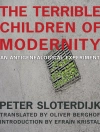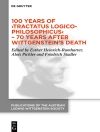A provocative examination of the artistic interpretation of twelve of Borges’s most famous stories.
In this groundbreaking book, Jorge J. E. Gracia explores the artistic interpretation of fiction from a philosophical perspective. Focusing on the work of Jorge Luis Borges, one of the most celebrated literary figures of Latin America, Gracia offers original interpretations of twelve of Borges’s most famous stories about identity and memory, freedom and destiny, and faith and divinity. He also examines twenty-four artistic interpretations of these stories-two for each-by contemporary Argentinean and Cuban artists such as Carlos Estévez, León Ferrari, Mirta Kupferminc, Nicolás Menza, and Estela Pereda. This philosophical exploration of how artists have interpreted literature contributes to both aesthetics and hermeneutics, makes new inroads into the understanding of Borges’s work, and introduces readers to two of the most vibrant artistic currents today. Color images of the artworks discussed are included.
Table des matières
Stories
Plates
Preface
1. Introduction
I. Painted Stories
IDENTITY AND MEMORY
2. The Other
3. Funes, the Memorious
4. The South
5. The Interloper
FREEDOM AND DESTINY
6. The Garden of Forking Paths
7. The Circular Ruins
8. The House of Asterion
9. The Immortal
FAITH AND DIVINITY
10. The Rose of Paracelsus
11. The Writing of the God
12. The Secret Miracle
13. The Gospel According to Mark
II. Identity and Interpretation
14. Literature, Art, and Philosophy
15. Interpretation
16. Painting Borges
17. Limits of Interpretation
Notes
Bibliography
Painting Borges: Art Interpreting Literature
Index
A propos de l’auteur
Jorge J. E. Gracia is Distinguished Professor of Philosophy and Comparative Literature at the University at Buffalo, State University of New York. His many books include Painting Borges: Philosophy Interpreting Art Interpreting Literature; Images of Thought: Philosophical Interpretations of Carlos Estévez’s Art; and Identity, Memory, and Diaspora: Voices of Cuban-American Artists, Writers, and Philosophers, all published by SUNY Press.












